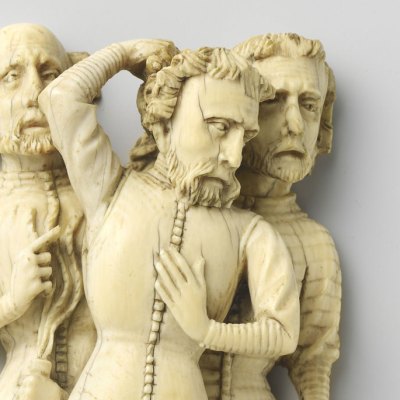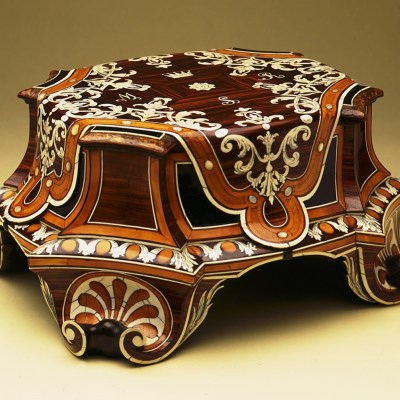It is no surprise that cross-party support saw the Ivory Bill sail smoothly through the United Kingdom Parliament and finally, on 20 December 2018, receive Royal Assent. Make no mistake, this ‘almost total ban’ on the trade in ivory is a triumph for populist politics and a good win for a beleaguered government, as well as for the Secretary of State at the Department for Food, Environment & Rural Affairs (Defra). One has to hope that the new law will contribute to the eradication of the illicit trade in poached ivory, and that the Government will demonstrate its true commitment to elephant conservation by investing all available resources into actively supporting work on the front line, across the African continent.
This, then, is how we begin 2019 in the United Kingdom. But the backdrop to the Ivory Act is really in the United States. It was President Obama’s ‘Director’s Order 210’ in February 2014 that started the present ball rolling. And there, the de facto import ban on ivory means that American museums and private collectors are unable to increase their holdings with works of art made of or containing ivory, if such objects are not already in the country, and then not without considerable impediments. And, of course, there are different rules on the trade in antique ivory in place across Europe, and in China.
The UK Government took into account many and varied responses to a ‘Consultation’ before presenting its Ivory Bill to Parliament. So, first, let us remind ourselves about the broad outlines of the ‘positive’ elements/exemptions originally proposed for the Bill:
• Items with only a small amount of ivory. Such items must be comprised of less than 10 per cent ivory by volume and have been made prior to 1947.
• Musical instruments. These must have an ivory content of less than 20 per cent and have been made prior to 1975.
• Portrait miniatures. A specific exemption for portrait miniatures – which were often painted on thin slivers of ivory – made before 1918.
• Sales to and between accredited museums. This applies to museums accredited by Arts Council England, the Welsh Government, The Scottish Government or the Northern Ireland Museums Council in the UK, or, for museums outside the UK, The International Council of Museums.
• The rarest and most important items of their type. Items of outstanding artistic, cultural or historic significance, and made prior to 1918. Such items will be subject to the advice of specialists at institutions such as the UK’s most prestigious museums.
In supporting the aims of what is now the Ivory Act, how should we, who continue to argue that there is no meaningful correlation between bona fide, CITES-compliant ivory works of art and the illegal trade, react? There is no longer any merit in debating how much further these exemptions might have extended; we are where we are. United Kingdom museums lobbied successfully and properly to protect their own interests, with considerable and vocal support from those involved in the art market. Now the salient issues revolve primarily around implementation, and how this will impact on the market for historic works of art. In writing the Regulations, Defra will be mindful of seeing that the intentions of the act are diligently but reasonably upheld. Does this leave any room for interpretation, or hope?
Well, yes, but everything depends on the creation of an efficient and watertight system, supported by a highly skilled panel of experts to advise. The Government already takes advantage of an ad hoc pool of expertise to support the operation of its Acceptance in Lieu (AIL) scheme and the Reviewing Committee on the Export of Works of Art (RCEWA). In the present writer’s view, advice on ivory should, likewise, come from the best experts available, and this might include experienced curators, leading academics and respected individuals from the auction houses/trade. The issuing of ‘licences’ under the first three categories listed above – de minimis, musical instruments and portrait miniatures – should probably be quite simple; no more complicated than applying for an export licence and not requiring external assessment. The act outlines an exemption application process, requiring images and all available documentation, presumably submitted online, and the payment of an appropriate administrative fee. The category of sales ‘between’ museums will apply to transactions that are presumably very infrequent. But with regard to ‘to’, how could a museum purchase an ivory carving by Richard Garbe dating from the 1930s?
Diptych showing scenes from the Passion (late 13th century). Wallace Collection.

Leaving aside the potential fate of thousands of modest, but culturally and artistically significant works of art that will likely become illegal to trade – ivory crucifixes, Japanese netsuke, modest theatre tokens, African carvings and so on – the real issue yet to be defined is the meaning of ‘outstandingly high artistic, cultural or historical value’. The act states that consideration should be given to:
(a) the rarity of the item;
(b) the extent to which the item is an important example of its type;
(c) any other matters specified in regulations made by the appropriate national authority.
It is here that collectors and accidental owners should anticipate pragmatic wisdom from the museum world. Defra will seek its advice, as well as that of the market and others, as it formulates the regulations promised for the middle to end of next year. It is earnestly to be hoped that, in seeking agreement over the definitions for works of art of ‘outstandingly high artistic, cultural or historical value’, advisors will consider as templates the wide-ranging holdings not only of our great London-based institutions and the major museums across these islands, but also those smaller local museums that are so much part of the fabric of the United Kingdom. What is rare and important in a small local history museum context might not, always and automatically, be seen in the same light in South Kensington or Bloomsbury. Might such yardsticks be useful when interrogating what ‘outstandingly high artistic, cultural or historical value’ might justifiably mean in an art market context?
Nor should it be forgotten the extent to which individuals and families have donated the fruits of their collecting and inheritance to their local communities. Surely we are not going to witness a Conservative-led iconoclasm with regard to our shared cultural inheritance, one that would risk future bequests in the form of works of art made of or including ivory. Otherwise we shall all be victims of the law of unintended consequences.
Martin Levy is Chairman of H. Blairman and Sons Ltd and a member of the Spoliation Advisory Panel.



